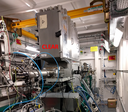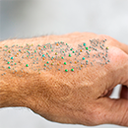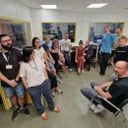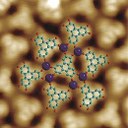
Having reached the operation status in 2016, CLEAR spectrometer at CLÆSS beamline has now proved its potential to push forward the research in different fields such as spintronics, the development of better batteries and deeper understanding on highly correlated systems such as superconductive materials.

A research project led by the University of Porto in collaboration with the ALBA Synchrotron has studied for the first time the interaction of nanoparticles with the skin, using synchrotron light at the MIRAS beamline. The findings unveil the role of the different skin components and the mechanism of the permeation enhancement conferred with nanoparticles, made from marine polymers. A nano delivery system application in the skin will reduce the dosage needed due to controlled drug delivery and allow newer and better-targeting therapeutic strategies towards cutaneous administration.

Just before the last Summer shutdown, XAIRA beamline achieved a key milestone, with the beamline optics seeing their first light. A great success for the beamline, reached thanks to the contributions of many people! This project is co-funded by the European Regional Development Fund (ERDF).

A research work led by the University of Valencia (Spain) has reported the fabrication of a novel device that allows the robust electrical detection of a fast and effective light-induced and thermally induced spin transition with an outstanding performance. It represents a tool with promising potential for generating new systems with applications in spintronics and straintronics. Experiments carried out at the BOREAS beamline have been crucial in this study.

IMDEA Nanociencia and ICMol researchers in collaboration with the ALBA Synchrotron achieved the stabilization of a high orbital magnetic moment in cobalt atoms directing a metal-organic network on a metallic surface. This strategy could lead to the development of low dimensional metal-organic materials with high magnetic anisotropy for prospective applications in spintronic devices.






